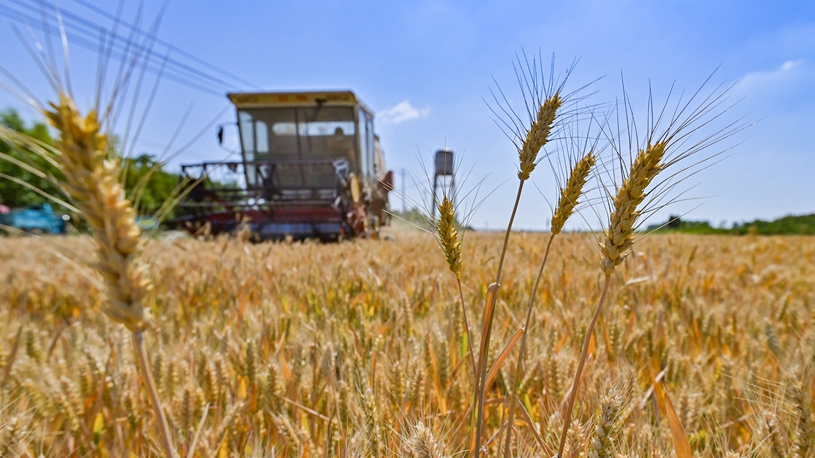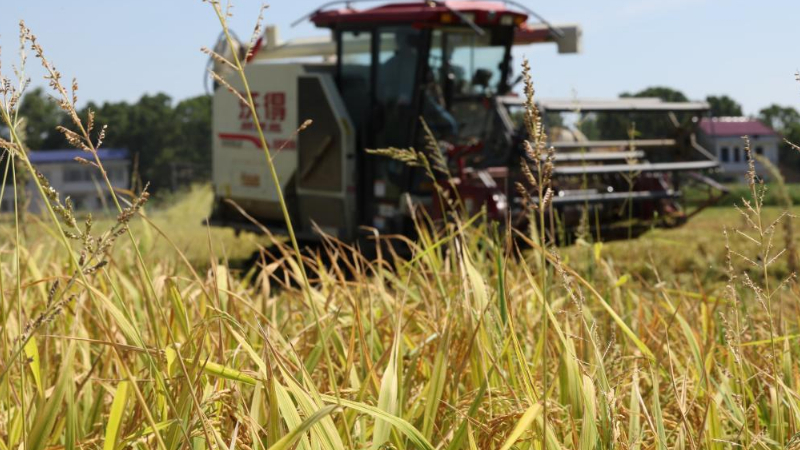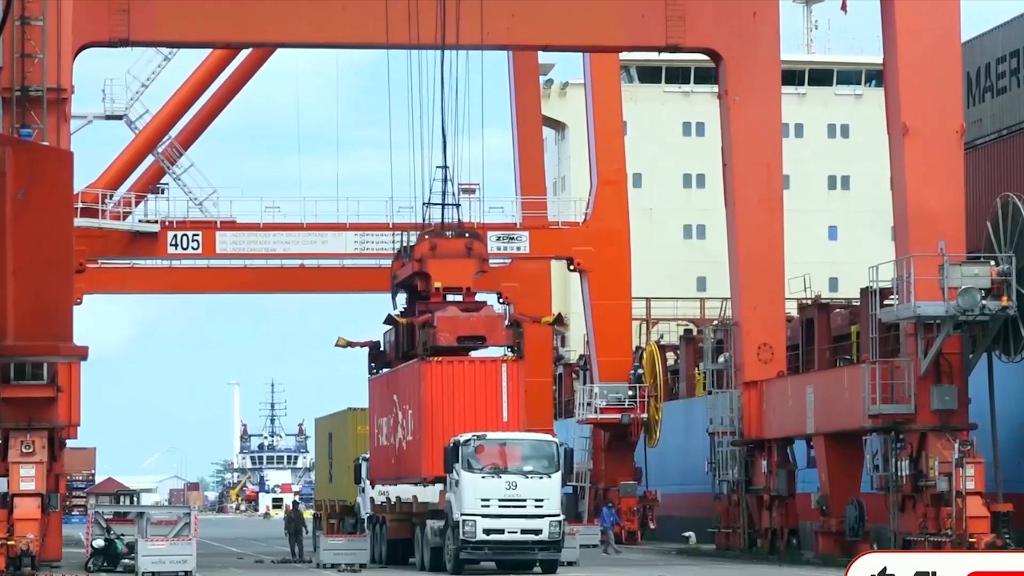* With an average altitude of over 5,000 meters, Tsonyi County, southwest China's Tibet Autonomous Region, covers a total area of 120,000 square km and is part of the Changtang National Nature Reserve, China's biggest and highest nature reserve.
* Tsonyi County started the relocation of its second batch of residents on Tuesday, as part of the region's plan to improve people's living conditions and protect the fragile local ecosystem.
* Four townships of the county will complete relocation by early August, and by then, all seven townships of Tsonyi, including the three that moved in 2019, will have completed relocation.
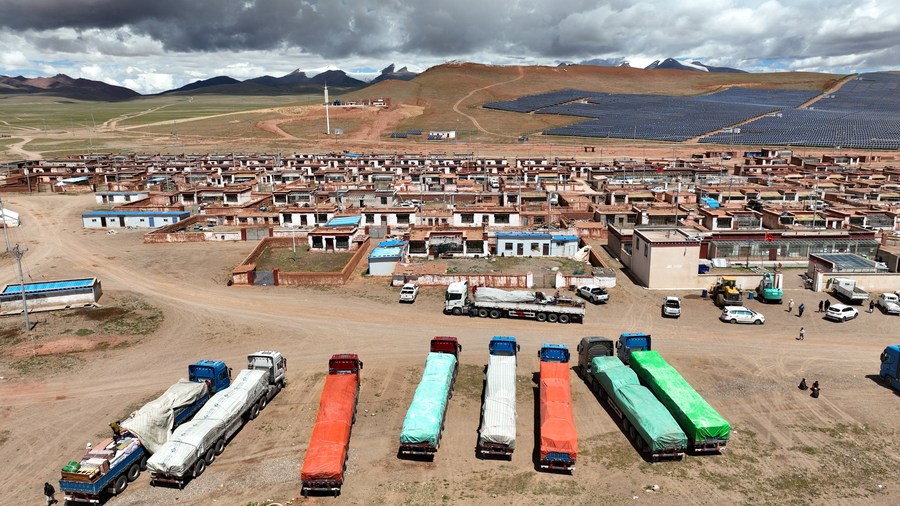
Aerial photo taken on July 13, 2022 shows trucks carrying furniture preparing to depart from Doima Township of Tsonyi County, southwest China's Tibet Autonomous Region. (Xinhua/Jigme Dorje)
by Xinhua writers Cao Jian, Zhang Jingpin, Lyu Qiuping and Kelsang Namgyai
LHASA, July 19 (Xinhua) -- Tsonyi County, southwest China's Tibet Autonomous Region, started the relocation of its second batch of residents on Tuesday, as part of the region's plan to improve people's living conditions and protect the fragile local ecosystem.
At around 7:40 a.m. Tuesday, more than 300 residents left their hometown in Doima Township of Tsonyi, China's highest county, moving nearly 1,000 km southward to their new home Singpori.
Singpori is on the north bank of the Yarlung Zangbo River in the city of Shannan, located at an altitude of 3,600 meters. It is only some 10 km from the Lhasa airport.
Four townships of the county will complete relocation by early August, and by then, all seven townships of Tsonyi, including the three that moved in 2019, will have completed relocation.
Tibet relocated the first batch of 2,900 residents in Tsonyi to Singpori in 2019.
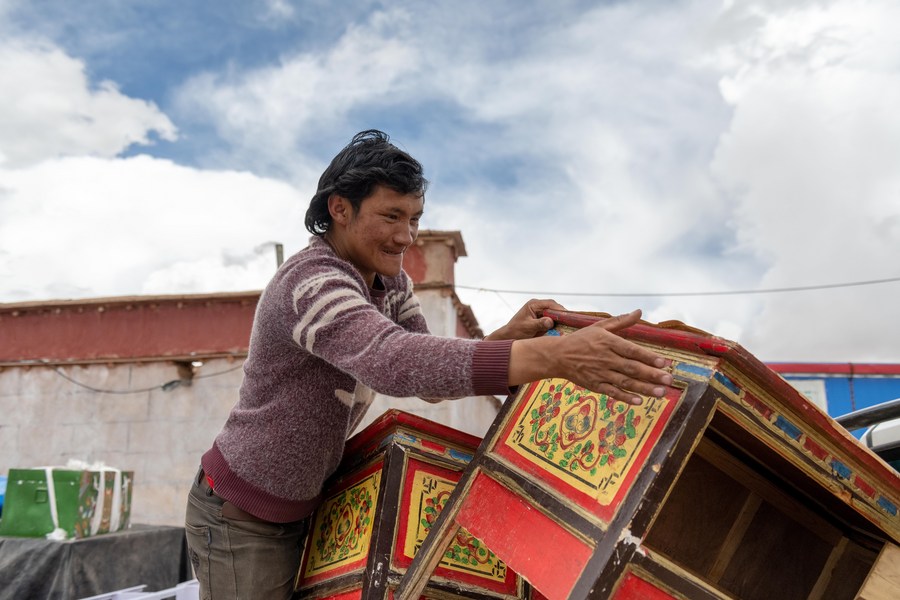
A villager loads furniture onto a truck in Doima Township of Tsonyi County, southwest China's Tibet Autonomous Region, July 12, 2022. (Xinhua/Zhou Dixiao)
"After moving to my new home, I will be able to visit the monasteries in Lhasa and Shannan more frequently to worship Buddha," said Garma, a 70-year-old herder from Doima Township.
HARD DECISION
With an average altitude of over 5,000 meters, Tsonyi County covers a total area of 120,000 square km and is part of the Changtang National Nature Reserve, China's biggest and highest nature reserve.
Due to the high altitude and harsh environment, the county is not suitable for human habitation. The oxygen in the air is a mere 40 percent of that on the plain. Its winter lasts 10 months each year, with the lowest temperatures reaching minus 40 degrees Celsius.
However, it was not easy for Garma to decide to move.
"It is the place where I was born and grew up. How can I not miss it?" said Garma. "But I know the relocation is good for us."
Suffering from rheumatic arthritis, a joint disease commonly seen on the plateau, Garma has lost the ability to herd. All she can do is fire the stove and cook butter tea while waiting for her family to return from herding.
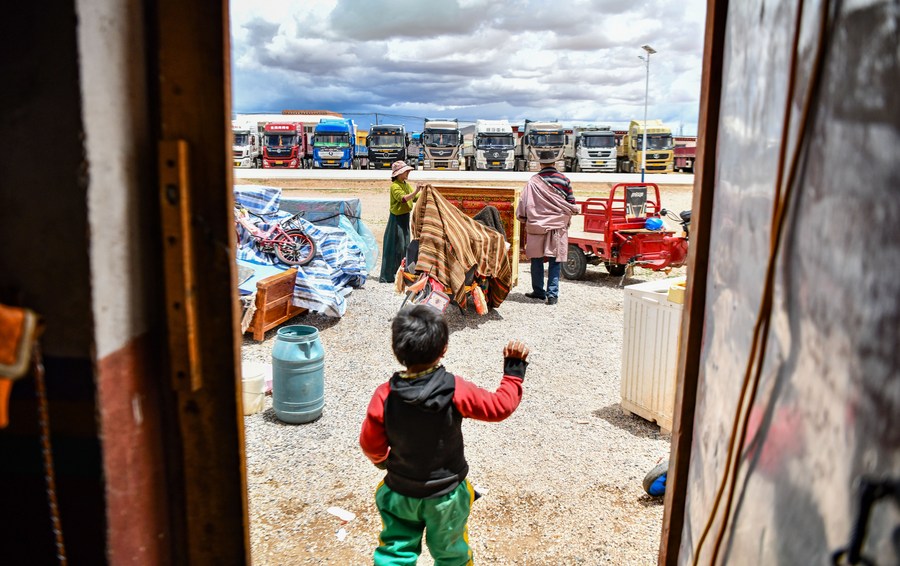
Villagers pack their belongings for relocation in Doima Township of Tsonyi County, southwest China's Tibet Autonomous Region, July 12, 2022. (Xinhua/Jigme Dorje)
"The relocation will not only make it easier for me to go to the hospital but also help my children avoid developing plateau diseases like me," she said.
As a compensation for their sacrifice, Garma's five family members, including her 2-year-old great-grandson, will receive 7,500 yuan (about 1,112 U.S. dollars) per person a year as a subsidy under the local policy of forage-livestock balance.
The government has set up a transitional period spanning the next few years so that some young people can take turns to herd in Tsonyi County, with a cooperative established in every village. The relocated residents can hold shares of the cooperatives with their pastures and livestock as investments and earn dividends.
When the transitional period expires, young people will also come to their new home, returning the vast land to nature.
"When my children go back for herding, I may also return with them to have a look at the ranch and the sheep," Garma said.
NEW HOPE
In Singpori, Garma's family has been allocated a two-story house and a small apartment, equipped with flush toilets and gas stoves. The community also has a newly-built hospital, a kindergarten, a school, a market and a recreation center.
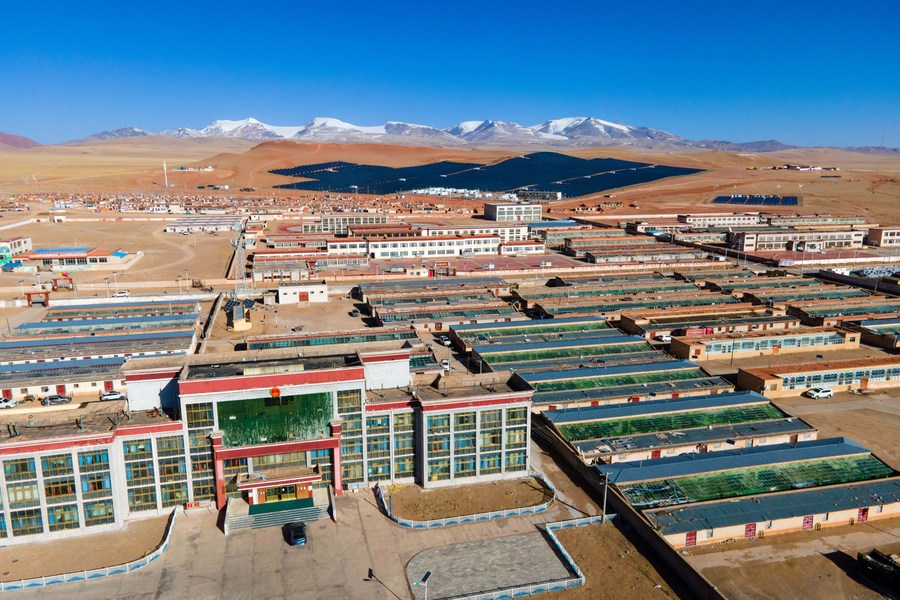
Aerial photo taken on March 27, 2022 shows a view of Tsonyi County, southwest China's Tibet Autonomous Region. (Xinhua/Zhou Dixiao)
Sichod Tsomo, Garma's granddaughter, did not attend school as she had to help her family with herding when she was young. The 22-year-old now has difficulty inputting characters on her smartphone.
She said her son is lucky as he can enter a good kindergarten free of charge in Singpori next year thanks to the relocation.
"I hope my son can go to a university someday," she said.
Sichod Tsomo plans to attend vocational training and open a tea house near her new home. Her husband, who received training to become an excavator driver last year, will try to find a job at a construction site nearby.
According to Yang Wensheng, Party chief of Tsonyi, some of the relocated residents have found jobs like chefs and machine operators after receiving vocational training, while some others have started working in cities like Lhasa and Shannan.
Thanks to the relocation, the per capita disposable income of the county surged to nearly 13,600 yuan in 2021, up nearly 30 percent from the level in 2019, when the county was lifted out of poverty.
Yang said the latest relocation came amid efforts to consolidate and expand poverty alleviation achievements with rural vitalization endeavors.
RETURNING LAND TO NATURE
Tibet has 11 national nature reserves, four national scenic spots, three national geological parks, nine national forest parks, and 22 national wetland parks. Protected natural areas make up almost 40 percent of the region's land area.
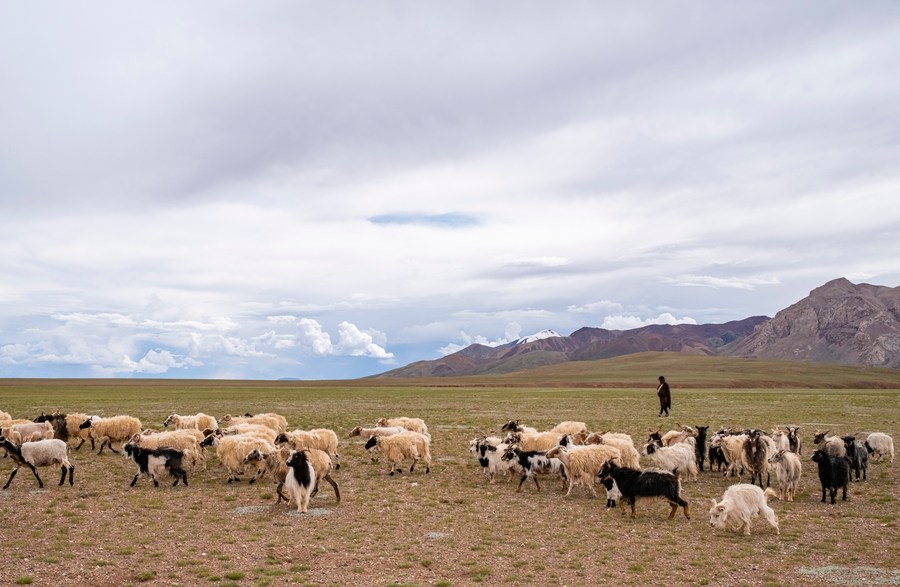
A villager herds livestock in Doima Township of Tsonyi County, southwest China's Tibet Autonomous Region, July 13, 2022. (Xinhua/Sun Fei)
The rare wildlife population in the region has been growing, with the Tibetan antelope population increasing to over 300,000, wild yak exceeding 20,000 and black-necked cranes surpassing 10,000, according to a report issued by the regional department of ecology and environment last month.
Because of the increasing populations of wild animals in the Changtang National Nature Reserve, the problem of local people and wildlife competing for living space has become more prominent.
"Our livestock is often attacked by bears, wolves and even snow leopards," Garma said. According to the local compensation standard, herders get a compensation of 500 yuan for a sheep killed by wildlife and 5,000 yuan for a yak.
"The relocation is beneficial to the ecological protection of the Changtang nature reserve," said Liu Baoyuan, a professor of geoscience with the Beijing Normal University, who is in Tsonyi to conduct a survey on water and soil erosion.
(Video reporters: Tenzing Nima Qadhup, Sonam Dekyi, Lyu Qiuping; Video editors: Wu Yao, Zhang Yuhong, Zhu Cong.) ■

